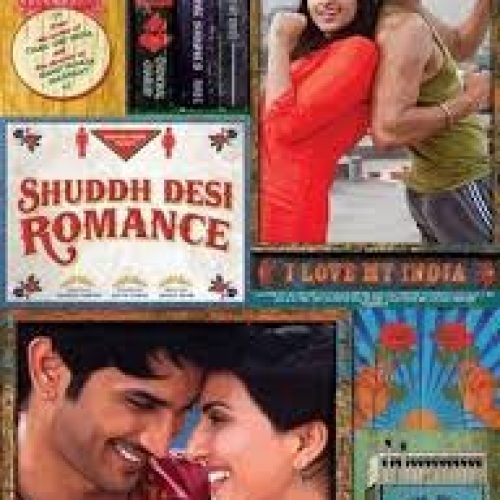It’s not every day that a Bollywood film manages to blend horror, comedy, and psychological thrills into a seamless narrative, but this one does just that. Directed by Priyadarshan, Bhool Bhulaiyaa stars Akshay Kumar, Vidya Balan, and Shiney Ahuja, taking place in a small town in India, primarily inside an ancient, sprawling haveli (mansion) with a dark history. The film, released in 2007, falls into the psychological horror-comedy genre, mixing elements of Indian superstition with modern psychological explanations. It draws viewers in with the promise of humor but leaves them grappling with much deeper emotions by the end.
The story centers around Siddharth and Avni, a newly married couple who return from the United States to settle into their ancestral home. The haveli has been locked up for years due to rumors of it being haunted by the spirit of a dancer named Manjulika. Skeptical of these superstitions, Siddharth ignores the warnings and moves in. However, strange occurrences soon follow, leading to the involvement of Akshay’s character, Dr. Aditya Shrivastav, a psychiatrist who arrives to unravel the mystery behind the supposed haunting. What begins as a simple ghost story soon transforms into a complex psychological puzzle that explores mental illness, the fragility of human emotions, and the power of belief systems.
What truly stands out in the film is the acting, especially Vidya’s portrayal of Avni. Throughout the film, her performance remains layered, ranging from an innocent, loving wife to something far more intense as the story unfolds. Vidya captures the audience’s attention with her effortless shift in demeanor, making the eventual reveal of her character’s arc not only believable but downright chilling. Her transformation during the climax is one of the most memorable moments in Indian cinema, showcasing her range as an actor. Akshay, on the other hand, brings his comedic flair to the table, but he tempers it with seriousness as his character dives deeper into the psychological roots of the mystery. His balance of humor and intellect makes him the perfect guide through the film’s maze of suspense and dark undertones.
The direction by Priyadarshan is impressive. Known for his work in comedy, he manages to shift gears smoothly between light-hearted moments and intense, eerie sequences. The transition from humor to horror never feels jarring, and the pacing keeps the audience hooked. The film doesn’t drag, even with its slightly longer runtime. What helps is the tight editing, particularly in the scenes where Vidya’s character shows signs of psychological turmoil. Every shot in these sequences feels necessary, contributing to the mounting tension and unease. The director also successfully taps into cultural beliefs surrounding spirits and mental illness, blending the two themes to create a storyline that is engaging and thought-provoking.
Cinematography plays a vital role in this movie. The haveli is portrayed almost as a character in itself. Its dark hallways, mysterious rooms, and antique decor add a sense of foreboding to the entire setting. Cinematographer Thiru does a fantastic job of using lighting and shadows to amplify the eerie atmosphere. One particularly haunting sequence involves Vidya’s character wandering the haveli at night, with just enough shadow and light interplay to keep the audience guessing whether the threat is supernatural or psychological. The grandeur of the haveli, with its ancient paintings and labyrinthine passages, is captured beautifully, heightening the sense of mystery. The traditional Indian setting, juxtaposed with modern psychological themes, is a masterstroke, enhancing the overall viewing experience.
The music by Pritam and background score by Ranjit Barot deserve a special mention. Songs like “Ami Je Tomar” perfectly encapsulate the haunting atmosphere, while the title track brings an energetic yet mysterious vibe to the movie. The background score amplifies the tension in critical moments, especially during Vidya’s key scenes. The mix of traditional instruments with modern orchestration strikes a balance that fits perfectly within the film’s dual themes of superstition and science. The haunting melody that accompanies the spirit of Manjulika becomes more than just a song — it turns into an emotional and psychological trigger that elevates the suspense.
Another element worth highlighting is the costume design. Vidya’s transformation is subtly hinted at through her wardrobe, with her attire becoming progressively more elaborate and traditional as the plot thickens. The rich colors and traditional Bengali garb she dons in key scenes not only look beautiful but also tie into the cultural and historical aspects of the story. Even Akshay’s character, with his more casual, modern look, contrasts sharply with the more traditional setting, reinforcing the clash between modernity and superstition.
One critique, however, could be aimed at some of the supporting characters, who don’t always feel fully fleshed out. Shiney Ahuja’s portrayal of Siddharth is solid, but his role is often overshadowed by the powerhouse performances of Vidya and Akshay. Some of the side characters are there primarily for comedic relief, and while they do succeed in lightening the mood, their subplots occasionally feel unnecessary to the overall narrative. That said, this doesn’t detract significantly from the film, as the central storyline remains gripping enough to carry it through.
In conclusion, this movie is a rare gem in Bollywood — a film that successfully blends humor, horror, and psychological drama without losing its way. The performances, especially Vidya’s, are a masterclass in acting, and the direction, cinematography, and music all come together to create an atmospheric, suspenseful experience. For those who enjoy a mix of genres, this movie is highly recommended. It’s not just about scares or laughs; it’s a deep dive into the human psyche and the power of belief. Whether you believe in ghosts or not, this film will keep you on the edge of your seat, questioning what is real and what isn’t.







